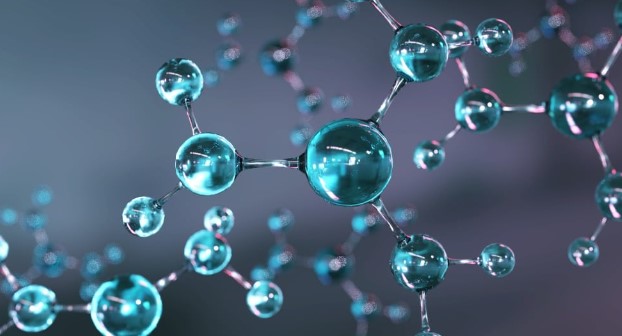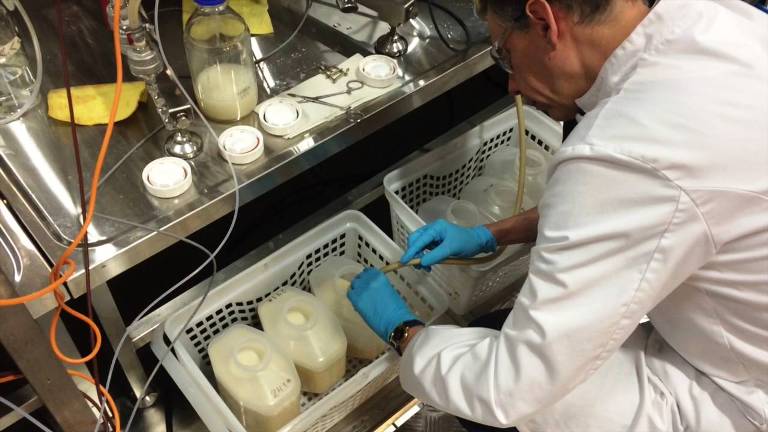The Basics of Polymers
A polymer is a large molecule made up of repeating units called monomers. The monomers are joined together by chemical bonds to form the polymer chain. The properties of a polymer depend on the type of monomers used and the way they are bonded together.
There are two main types of polymers: natural and synthetic. Natural polymers are found in living organisms and include proteins, carbohydrates, and nucleic acids. Synthetic polymers, also known as man-made polymers, are created by chemical reactions and include materials such as plastics, rubber, and synthetic fibers.
Polymers can be further classified based on their chemical structure and properties.
-
Thermoplastics are a type of polymer that can be melted and reshaped multiple times without losing its properties. Examples include polyethylene, polypropylene, and polyvinyl chloride.
-
Thermosetting polymers are a type of polymer that cannot be melted once they have been set. Examples include epoxy resins and polyurethanes.
-
Elastomers are a type of polymer that can stretch and return to their original shape. Examples include natural rubber and synthetic rubber.
Polymers have a wide range of applications, including construction materials, packaging, textiles, and medical devices. Due to the diverse properties of polymers, they have been used in many areas such as medicine, agriculture, electronics, and transportation.
It’s worth mentioning that polymers are widely used in many fields and have a lot of benefits, however, their production and disposal can have negative impacts on the environment. Therefore, using renewable resources, recycling, and biodegradable polymers are being studied to reduce the environmental impact.
Different Types of Polymers
Polymers are large molecules made up of repeating units called monomers. They can be classified into different types based on their properties and the way they are made.
-
Natural Polymers: These are polymers that occur naturally in living organisms. They include carbohydrates, such as cellulose and starch, proteins, such as enzymes and collagen, and nucleic acids, such as DNA and RNA.
-
Synthetic Polymers: These are polymers that are made by humans through chemical reactions. They can be further classified into two types:
-
Thermoplastics: These polymers can be melted and reshaped multiple times without losing their properties. Examples include polyethylene, polypropylene, and polyvinyl chloride.
-
Thermosetting polymers: These polymers cannot be melted once they have been set. They are hard and rigid and examples include epoxy resins, polyurethanes, and phenolic resins.
-
Elastomers: These polymers are characterized by their ability to stretch and return to their original shape. Examples include natural rubber and synthetic rubber.
-
Biodegradable Polymers: These are polymers that can be broken down by microorganisms in the environment. Examples include polylactic acid (PLA) and polyhydroxyalkanoates (PHA).
-
Conductive polymers: These polymers are used in electronic applications, due to their ability to conduct electricity. They are often used in solar cells and in batteries.
-
Block polymers: These are polymers that are composed of two or more chemically distinct polymer blocks. They have unique properties that arise from the interaction between the different blocks.
This is a brief overview of different types of polymers, there are many other types with specific properties and uses that have been developed through research and development. The properties of a polymer can be tailored to meet specific needs by adjusting the chemical structure and composition of the monomers.
How Polymers are Used in Everyday Life
Polymers have a wide range of applications in everyday life and are used in many products that we use on a daily basis. Some common examples of polymer applications include:
-
Packaging: Polymers such as polyethylene and polypropylene are used in the manufacture of packaging materials such as plastic bags, food containers, and shrink wrap.
-
Textiles: Synthetic fibers such as polyester, nylon, and acrylic are used in the production of clothing and other textiles.
-
Construction: Polymers are used in the construction industry to make materials such as pipes, roofing, and insulation.
-
Automotive: Polymers are used in the manufacture of car parts such as dashboards, door panels, and gears.
-
Electronics: Polymers are used in the manufacture of electronic devices such as computer keyboards, mobile phone casings, and televisions.
-
Medical devices: Polymers are used in the manufacture of a wide range of medical devices such as catheters, artificial heart valves, and drug delivery systems.
-
Personal care: Polymers are used in the manufacture of personal care products such as toothbrushes, combs, and razors.
-
Furniture: Polymers are used in the manufacture of furniture such as chairs, tables, and sofas.
-
Adhesives: Polymers are used in the manufacture of adhesives such as glue, tape, and sealants.
-
Toys: Polymers are used in the manufacture of toys such as dolls, action figures, and building blocks.
It’s worth mentioning that polymers have many benefits, however, their production and disposal can have negative impacts on the environment. Therefore, using renewable resources, recycling, and biodegradable polymers are being studied to reduce the environmental impact.
The Advantages & Disadvantages Of Using Polymers
Advantages of using polymers:
-
Low cost: Polymers are relatively inexpensive to produce and can be used to create a wide range of products.
-
Durability: Many polymers are highly durable and resistant to wear and tear.
-
Lightweight: Polymers are lightweight, making them easy to transport and handle.
-
Variety: Polymers can be produced in a wide range of formulations, giving them a variety of properties and uses.
-
Easy to shape: Polymers can be molded into a wide range of shapes and sizes, making them suitable for a variety of applications.
Disadvantages of using polymers:
-
Environmental impact: Many types of polymers are not biodegradable and can take hundreds of years to decompose, resulting in pollution and waste.
-
Health hazards: Some types of polymers can release toxic chemicals if they are burned or if they come into contact with certain chemicals.
-
Low strength: Some polymers have a low strength-to-weight ratio, which can make them less suitable for certain applications.
-
Recycling: Some types of polymers are difficult to recycle and may not be accepted by recycling programs.
-
Viscosity: Some polymers are highly viscous and may be difficult to process.
Sustainable plastics:
-
Bioplastics: Bioplastics are made from renewable resources such as corn starch, sugarcane, and cassava.
-
Recycled plastics: Recycling plastics reduces the need to extract and process new raw materials.
-
Biodegradable plastics: Biodegradable plastics are plastics that can be broken down by natural processes.
-
Compostable plastics: Compostable plastics are plastics that can be broken down by natural processes and can be used as a fertilizer.
How to Determine The Quality Of A Polymer Product?
There are several methods to determine the quality of a polymer product, including:
-
Visual inspection: This involves looking for any defects or inconsistencies in the product’s shape, size, and surface finish.
-
Dimensional inspection: This involves measuring the product’s dimensions, such as length, width, and thickness, to ensure they meet the specified tolerances.
-
Strength testing: This involves subjecting the product to various types of loads, such as tensile, compression, and impact, to determine its mechanical properties, such as tensile strength, yield strength, and modulus of elasticity.
-
Chemical analysis: This involves analyzing the product’s composition, such as its polymer type, additives, and fillers, to ensure it meets the specified requirements.
-
Environmental testing: This involves exposing the product to various types of environmental conditions, such as temperature, humidity, and UV light, to determine its performance under these conditions.
-
Durability testing: This involves simulating real-life usage scenarios to determine how well the product holds up over time.
That the type of testing used will depend on the application and properties of the specific polymer product being evaluated. You can customize your design and material selection with Polymer Compounds. They continuously develop technical and aesthetic innovations to improve technical and aesthetic performance with a deep knowledge of polymers.
What are the Latest Innovations in The Field Of Polymer Science?
There are several recent innovations in the field of polymer science, some of the most notable include:
-
Biodegradable polymers: Researchers have developed new types of polymers that can degrade the environment, reducing the environmental impact of plastic waste.
-
Self-healing polymers: Scientists have developed polymers that can repair themselves after being damaged, which could have applications in products such as car parts and electronics.
-
3D printing of polymers: Advances in 3D printing technology have made it possible to create complex, functional polymer parts using additive manufacturing techniques.
-
Graphene-based polymers: Graphene is a two-dimensional material that is highly conductive and strong. Researchers are exploring ways to incorporate it into polymers to create materials with improved electrical and mechanical properties.
-
Smart polymers: Scientists are developing polymers that can respond to external stimuli, such as temperature, pH, or light, which could have applications in fields such as medicine and robotics.
-
Recycling of plastic waste: Researchers are developing new methods of recycling plastic waste, such as chemical recycling, in order to reduce the environmental impact of plastic waste and conserve resources.
-
Polymer nanocomposites: scientists have developed polymers with nano-sized particles (clay, cellulose, carbon nanotubes, etc) to improve properties such as strength, thermal stability, and barrier properties.

The Basics of Polymers? A polymer is a large molecule made up of repeating units called monomers. The monomers are joined together by chemical bonds to form the polymer chain. The properties of a polymer depend on the type of monomers used and the way they are bonded together.






